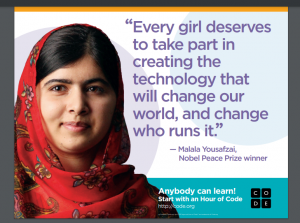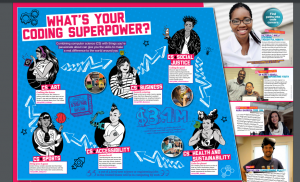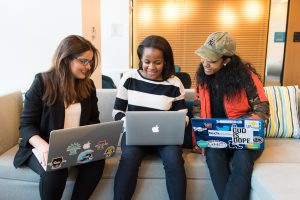The world of online learning has taken the world by storm over the last several years. One of the questions we struggle with is, “How do we create effective online learning?”
It’s simple: Address the why before the how.
In any learning, this is the most important element. Without question. No exceptions. Mic Drop.
After the why, we can then dive into the what and how.
While some may tell you that it is the skills that are most important in learning, they are wrong. It is all about pedagogy and the learning environment, and ultimately–the learner.
There are 6 major areas that must be addressed in e-learning:
- Motivation for learning
- Relevance of learning
- Bite-sized learning
- Hands-on learning
- Resources for learning
- Community around learning
Motivation
Motivation is not external. You cannot motivate learners, but you can provide a learning experience that allows them to discover their own motivation. Buy-in is real and matters. And it is vital for learning.
There are 2 possible reasons learners are spending time with your learning.
- Want: learners are here voluntarily and are already motivated, or at least willing to become motivated. In this scenario, it is a different game. You don’t need to convince them to learn, but you will need to provide reasons to continue when it gets hard. Take advantage of that raw energy and eagerness and dive in immediately. The only danger now is not providing engaging learning, and they lose interest. Shame on us if this happens.
- Need: Design interesting scenarios where the obvious solution involves the skills and ideas of the learning. Let learners see that there is a definite need for these skills. There is clear value in them spending time on this learning. Get them excited and amazed at what they can do with the learning. Then design learning to guide them through scaffolded steps where they build their learning and motivation steadily.
This is why the connection a student has with a course is so important. An engaging, genuine, and enthusiastic instructor, whether live or recorded, helps build that connection. That connection will expand to include everything about the course, including the content and skills.
Relevance
It must be crystal clear how this learning relates to the world, but not just any world, the world the learner is in right now. Know your learners: are they mid-career professionals looking to get ahead, are they inexperienced but ambitious young professionals building up their resume, business leaders looking to learn more about an industry, people just looking to learn enough just to get started, or are they just discovering learning for the first time. Use examples, stories, and demonstrations that clearly demonstrate the skills, ideas, and concepts in action. Target your audience; giving an example of a factory quality assurance system is not the real world for college students. In the same light, using TikTok examples is not going to appeal to your senior leaders.
Bite-sized learning
You have to take high-level and abstract ideas and break them down into smaller chunks that have meaning to the student. They have to incrementally see how the skill or topic applies to the world around them in real ways. But there is something we have to be careful of, called cognitive load, which in essence means you cannot just keep cramming information down their throat all at once. Break it up, and give them chances to digest, synthesize, explore, and review. Provide frequent practice and activities to interact with the content and make sure to intentionally incorporate previously learned skills from earlier lessons. Blending existing knowledge (recent and long-term) with new learning is a powerful way to increase retention.
Hands-On
The days of passive lecture are long gone. Learning must be two-way, where the student is doing things and getting feedback throughout, not just at the end. Interactive learning is used for both basic knowledge as well as application of knowledge. There must be opportunities to demonstrate their learning, yes to a possible employer or boss, but more so just to themselves. That practice and application helps “store” their new learning in a different area of their brain. Simply providing recorded videos with some questions at the end will not reach your students, and will rarely be effective. It’s ok to use a quiz or test as part of the learning, but practice and demonstration must play a much larger part. Use interactive and animated visuals; be especially sure not to just display and describe them, but include some interactions or activities that let students apply what they see in the visual. That can be done through both objective and open-ended questions.
Community
Research shows us that even in virtual learning, students want some sense of community. Find ways to let learners interact with other learners. This can be a student discussion board, social media group, peer feedback, or even online office hours with the course leader. When I was doing my online master’s degree at Ga Tech, I drove several hours just to work together with a group partner for an evening. Is that logical? No. Was it necessary? Yes.
Resources
Students will learn on their own, just as they are in your course. You have to replace having an instructor in a room to whom they can ask questions. Anticipate the questions students will ask, and prepare examples and demonstrations for different levels of understanding. Scaffold the learning enough so you can prepare for common questions, sticking points, and confusion. You will have students lost right at the start, and you will have advanced students getting stuck much farther along. People need different types of learning and resources at different points in their learning journey. Provide a variety of learning including video, audio, text, diagrams, and animations to explain concepts and teach skills.
You have to make sure that they have information that can help them work through their problems as they are working through the course. I can’t emphasize enough the power of great resources.
There you have it. E-learning can be engaging and effective. In truth, the elements I introduced in this article translate directly into any type of learning.











